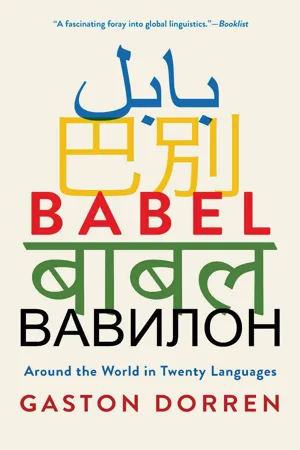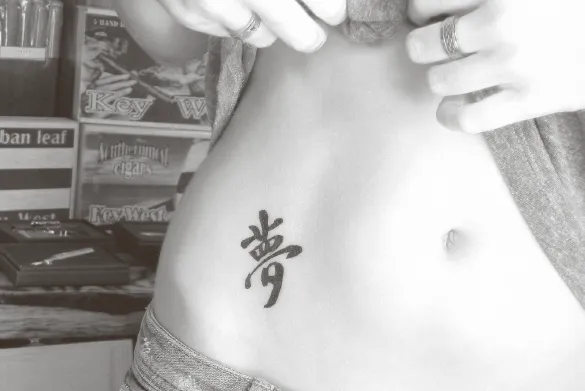![]()
2
Mandarin
PŬTŌNGHUÀ
1.3 billion speakers
Mandarin has some 900 million native speakers, more than any other language, and 400 million second-language speakers. China, Taiwan, Singapore and Malaysia are the major Mandarin-speaking countries. Most migrants of Chinese extraction used to speak Chinese languages other than Mandarin. Today, Chinese emigrants will often speak Mandarin.
Mandarin
SELF-DESIGNATION (P
ǔTōNGHUà, used in mainland China; literally ‘common speech’),
(G
UóYǔ, in Taiwan; ‘national language’),
(H
UÁYǔ, elsewhere in Asia; ‘Chinese language’). Also called Standard Chinese, (Modern) Standard Mandarin; (loosely) Chinese.
FAMILY Mandarin is one of the Chinese languages, often called ‘Chinese dialects’. This group belongs to the Sino-Tibetan family, of which it is the largest by a very wide margin.
SCRIPT Mandarin has a unique character script. See main text.
GRAMMAR Mandarin has hardly any inflection, which means that words have only one form: for singular and plural, for present, past and future, for subject and object. Nouns do not have a gender, but they fall into classes, each of which requires a specific classifier in some grammatical contexts, for instance after a numeral. This is often compared to the English word ‘cattle’, which cannot be counted directly (‘one cattle, two cattles’), but only by adding the classifier-like word ‘head’: two head of cattle.
SOUNDS Mandarin is probably the most famous of the tonal languages (see chapter 14). Mandarin syllables are remarkably simple in structure: they usually start with a consonant, followed by one or two vowels; the final consonant, if there is one, is /n/ or /ng/. In writing, there is also a final r, but this is never pronounced as a consonant.
LOANWORDS Sanskrit (religious terms), Japanese (scientific and economic terminology) and English.
EXPORTS Chow, feng shui, gung-ho, kowtow, pinyin, tai chi, tao (or dao) and yin-yang. Loan translations include brain-washing (from XǐNǎO), paper tiger (ZHǐ LǎOHǔ), long march (CHÁNG ZHēNG) and scorched earth (JIĀOTǔ). Culinary terms such as chop suey, kumquat, lapsang souchong and bok choy tend to have originated in Cantonese; ginseng comes from yet another Southern Chinese language.
CONFUCIUS Since 2004, China has actively promoted the study of Mandarin through its Confucius Institutes. As of late 2017, there were 516 branches in 142 countries. According to the Institute, more than 7 million students took language courses over the past thirteen years. Also, outside these institutes, the study of the language has seen a considerable rise in popularity since the early 2000s.
2: Mandarin
The mythical Chinese script
If Spanish is the easiest of the Babel languages for English speakers to learn, Mandarin and Japanese are probably the hardest. It takes persistence to master the Chinese tones, while the linguistic intricacies of Japanese-style politeness are unlikely to become second nature in a hurry. Yet, they would perhaps not be among the world’s most difficult languages if it weren’t for the immense complication of their writing systems.* No other system in the modern world requires schoolchildren and second-language learners to memorise a greater number of symbols than the Chinese character script. It’s no exaggeration to compare it to a Great Wall around the language – not impregnable, to be sure, but formidable nonetheless. Japanese, though using a smaller number of characters, has found ingenious ways to create additional complexity, a feat which we’ll admire in a separate chapter.
Nowadays, Westerners will come across Chinese writing in restaurants and news stands, online, on packaging material, and increasingly on necks, arms, ankles, backs and other parts of the human anatomy. Tattoo accidents have been known to happen, resulting in people’s skin proudly proclaiming ‘mad diarrhoea’ or ‘coffin dude’, while other supposed characters are meaningless or back to front. Fortunately for them, five out of six people on the planet can’t tell the difference.
While we can hardly be expected to know hundreds or even thousands of Chinese characters (learning them would take years), it’s certainly possible to know a bit about them. But somehow, even after centuries of contact, Western ideas about Chinese writing are still beset by misconceptions. ‘There is probably no subject on earth concerning which more misinformation is purveyed and more misunderstandings circulated than Chinese characters or sinograms,’ said J. Marshall Unger, a professor of Japanese who wrote a book about them. What makes it hard to dispel the misconceptions is that they generally contain a kernel of truth. I’ll mention these kernels first, and then chip off the crusts of inaccuracies.
It’s all too easy to get your Chinese (or lapanese) tattoo wrong. But this one is good to keep: the character means ‘dream’ or ‘ambition’.
1. Chinese writing goes from top to bottom
What’s true. Traditionally, Chinese text was indeed written in columns from top to bottom and ordered from right to left. If there was no space for columns, for instance on certain signboards, the text would be written right to left. In Taiwan, Hong Kong and overseas Chinese communities today, the vertical, right-to-left writing style is not uncommon in newspapers and books. Books that are laid out in this way have their binding on the right, as Arabic and Hebrew books do.
On the spines of books, titles are written top to bottom, with each character in its normal upright orientation. This is different from the practice in English and other European languages, where most titles are rotated 90 degrees: mostly clockwise in the case of English, Dutch and the Scandinavian languages, but more often anticlockwise in French and Spanish – while the Germans can’t seem to make up their minds.
But then there’s this. Most Chinese text these days is written and printed from left to right on horizontal lines. In mainland China, it’s rare to find anything else; everywhere else, this orientation is increasingly the norm.
2. Chinese characters are basically pictures
What’s true. Some Chinese characters
are stylised pictures of objects or fairly intuitive visualisations of ideas. It doesn’t take much imagination to work out that
(
RéN), which means ‘person’, depicts the legs of a person, or that there is a relation between
(
èR) and its meaning, ‘two’. Even though it’s not immediately evident, it’s easy to believe that
(
MÙ) began life as an attempt to draw a tree, which is indeed what it represents. Other characters are harder to trace to their roots, such as the one for
SHUǐ (‘water’):
. There’s good historical evidence that it originated as a winding river flanked by four drops or whirls.
Other characters are not single pictograms or ideograms, but compounds of two or more. Well-known examples include the double-tree character for ‘grove’,
(
LíN), and the triple-tree one for ‘forest’,
(
SēN).
* Another much-quoted specimen from this category is
(
XIū) for ‘shade’ or ‘rest’: to the left of the tree, we see
(which is a squeezed variety of the
character for ‘person’ that we saw above). The idea then would be ‘person resting in the shade under a tree’ – so neat and appealing an explanation that many experts consider it a just-so story.
A good deal of fun is to be had from the few pictographic characters that exist. According to experts, the character for ‘egg’
(
LUǎN) displays a pair of what are called ‘eggs’ in Arabic, Russian, Spanish, German and other languages – but ‘nuts’ in English, and not the ones growing from trees. Equally unsafe for work, the character
(
Mǔ) has reduced the concept of ‘mother’ or ‘female’ to a mere set of Cubist-style breasts, with the nipples in full view. Or, turning from the puerile to the mathematical, let’s wonder why the character for eight,
(
BĀ) looks the way it does. Etymologists agree that this sign originally meant ‘to divide’. Some claim that
also acquired the meaning ‘eight’ because this number is so easily divided – three times even, since 8 equals 2 to the 3rd power. Isn’t that a rather lo...


















